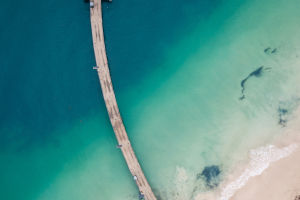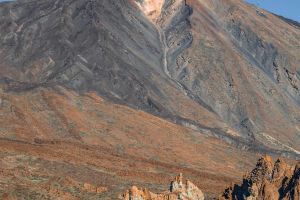Red soil is the land with red soil. Black soil is a unique treasure given by nature to mankind. The soil is in good shape, with high fertility, and ideal for plant growth. Red soil is a low-yielding, infertile soil, mainly due to the accelerated 'red soil desertification' caused by man and weather.
Soil is a loose surface layer on the earth's surface that has the fertility to grow vegetation. Different types of soil are found in different parts of the world, depending on topography, climate, biology, and other conditions.
Among the naturally occurring soils, those with the highest organic matter content and fertility are the "black soils". These areas are all located in the humid cold temperate zone, where the low winter temperatures are very favourable for the accumulation of organic matter, and the wet climate is conducive to the growth of vegetation, with large quantities of dead branches and leaves, forming humus, which is the main source of organic matter.
In fact, there is also a black soil area in the southern hemisphere, the Pampas region of Argentina in southeastern South America, where the "red black soil" is found, and which is the most important red black soil area in the world.
The Pampas is located on the Atlantic coast of eastern South America, between 32° and 38° South, in a subtropical heat zone with a humid subtropical monsoon climate.
However, due to the presence of the western Andes and the fact that the land area is not very large, the Pampas grassland region does not receive a lot of precipitation and is distributed with grassland vegetation.
The Pampas has fertile reddened black soil and, combined with sunny days, plenty of light and a large temperature difference between day and night, the soybean is of high quality.
Why does a region that is located in the subtropics also form black soils? We know that in the subtropical south of the country, the main zonal soil is the acidic red soil, so why is the Pampas not red soil? In fact, to a certain extent, "reddened black soil" can be understood as soil between black soil and red soil.
In addition to the yellow and black soils, there is also a magical ochre-red soil in the vast expanse of the earth, rivaled only by the red soil of Brazil. Two masterpieces of nature in beautiful Yunnan are associated with the land: the Hani terraces of Yuanyang and the red land of Dongchuan.
The Yuan Yang terraces are known as the 'carvings of the earth', while the Dongchuan Red Land is known as the 'palette of the earth', like the mythical description of the day when God was creating the earth with a palette in hand, and when the coloring was about to be completed, the palette was accidentally left on earth.
God forgot about it, but those who have been to Dongchuan will never forget it.
Located to the northeast of Kunming, Dongchuan's red earth is a dazzling shade of crimson due to the high iron and aluminum content of the soil. The land is divided into blocks of color by fields and crops, which, when viewed from afar, are colorful and even more spectacular when set against the blue sky and white clouds.
The altitude of the red land is around 2,000 meters, and local farmers have worked hard on this barren land for thousands of years, instead of decorating it into a place of brilliantly colored beauty. The red soil is suitable for growing barley, wheat, tea, oil tea, cedar, and horsetail pine.
The local people have improved the red soil by applying more organic fertilizer and replenishing cooked lime, and planted economic forestry trees such as tea trees, oil tea, fir, and horsetail pine, which are suitable for growing in acidic soil, thus maintaining the soil and water and improving the economic efficiency.


